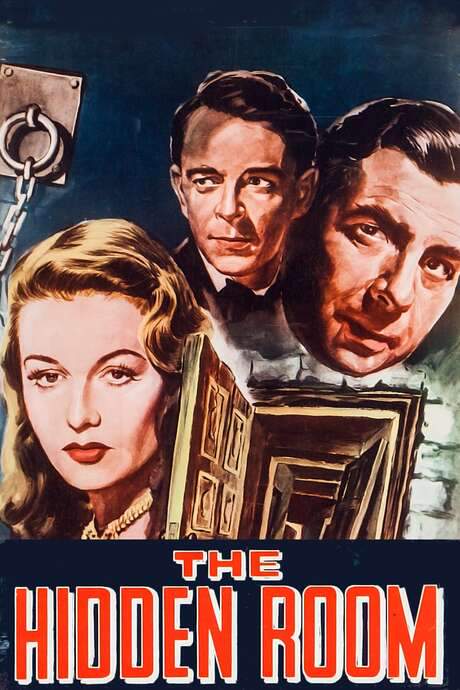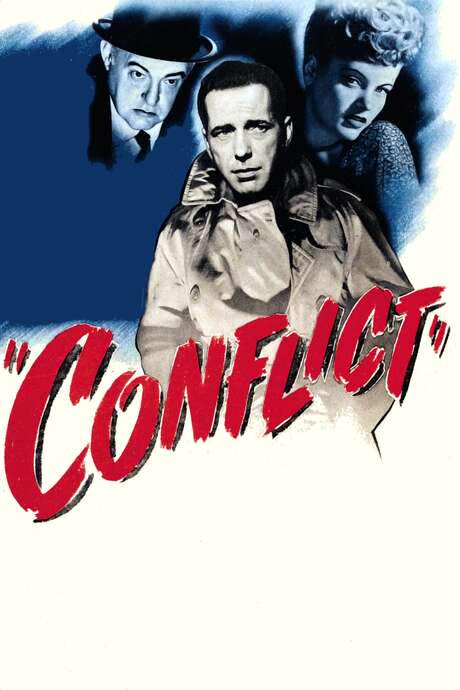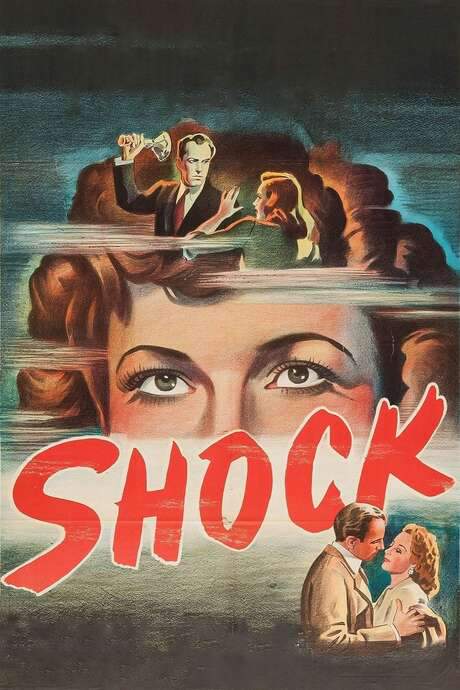
Cornered
Year: 1945
Runtime: 102 mins
Language: English
Director: Edward Dmytryk
A World War II veteran hunts down the Nazi collaborators who killed his wife.
Warning: spoilers below!
Haven’t seen Cornered yet? This summary contains major spoilers. Bookmark the page, watch the movie, and come back for the full breakdown. If you're ready, scroll on and relive the story!
Cornered (1945) – Full Plot Summary & Ending Explained
Read the complete plot breakdown of Cornered (1945), including all key story events, major twists, and the ending explained in detail. Discover what really happened—and what it all means.
After the end of World War II, Laurence Gerard, a Canadian RCAF flyer and former prisoner of war, returns to France determined to uncover who ordered the killing of his bride, who had joined the French Resistance just weeks before their marriage. The widow’s killer remains elusive, and the man whom Gerard’s father-in-law, Étienne Rougon, identifies as the likely culprit is Marcel Jarnac, a celebrated figure who supposedly died in 1943. Yet Rougon harbors grave doubts. The police have no solid description of Jarnac, and the one man who might have known him created a dossier that was burned to ashes. In a burned fragment and an envelope addressed to Madame Jarnac, Gerard finds a clue that drives him toward a distant lead: the widow herself.
From that fragile breadcrumb, Gerard follows a dangerous trail to Buenos Aires, where a man named Melchior Incza seems to know far too much about him. At first wary of accepting any help, Gerard nevertheless agrees to attend a party hosted by Tomas Camargo, a wealthy businessman connected to the widow’s circle. There he encounters Camargo’s uncle, Manuel Santana, and the very woman who might hold the key to the mystery. The encounter is uneasy but revealing, and Gerard’s pursuit widens into a perilous web of social intrigue and hidden loyalties.
In a tense hotel confrontation, Madame Jarnac refuses to cooperate, pushing Gerard into a more covert approach. Santana urges him to desist, yet his curiosity only hardens. A late-night meeting reveals Diego, a hotel valet who seems oddly involved in the night’s strange rhythms. The truth begins to surface: Madame Jarnac is willing to cooperate, but the information comes with a dangerous price. A forged note claims that Jarnac plans to flee that very night under the alias “Ernest Dubois,” but the deception becomes clear when the supposed address leads nowhere. The real threat emerges not from a single killer but from a shadowy alliance—the Nazi-oriented circle that Jarnac represents—of which the widow is only a piece in a larger, more dangerous puzzle.
To shake loose the truth, Gerard tricks Incza into believing he possesses the full dossier on Jarnac. Incza infiltrates the hotel safe, only to find nothing of value. Gerard is sent to Camargo’s room, where Camargo’s wife keeps him occupied with luxury and vice. Gerard kisses her, but refuses to surrender to temptation; he later articulates a blunt, intimate truth: he is bored and cannot wait any longer for Camargo. The moment is both personal and political, underscoring the film’s themes of desire, power, and moral compromise. Meanwhile, Incza realizes the dossier isn’t there, and when the “valet” Diego interrupts, tragedy strikes: Incza kills Diego, and Gerard returns to a room that now marks him as a murder suspect.
With his alibi secured only by a serving waiter, Gerard is given 48 hours to leave the country. The tension tightens as Incza reveals a plan: Jarnac will be seen again at his old office. Gerard resolves to stake out a bar that Madame Jarnac once used as a meeting place, a trap that soon proves fatal for the conspirators. Jarnac finally makes his appearance, and a waiting game begins with Incza’s impending arrival and the coveted dossier. While the two men bide their time, Jarnac launches a political speech on the broader consequences of America’s actions abroad, arguing that injustice and poverty sow the seeds of extremist movements that will always claim the desperate.
Incza’s attempt to betray Jarnac to Camargo is foiled by the moment Jarnac arrives, and he realizes his own position in the plot. Jarnac eliminates Incza, and Gerard’s fate seems sealed: he’s to die in a staged duel, with Camargo as a witness. Camargo objects, but Jarnac holds a power that could expose more than one alliance. In the ensuing struggle, Gerard seizes the opportunity to overpower Jarnac, delivering a relentless barrage that leaves the killer dead before Santana and DuBois arrive. The body is cold, but the evidence of Jarnac’s connections endures: the paper Gerard reveals links Jarnac directly to Camargo, exposing a broader conspiracy that could topple a powerful postwar network. Santana orders the police to pursue the case with the evidence now in their hands, and the film closes on a note of hard-won justice, tempered by the costs paid along the way.
Throughout, the narrative moves with a cool, investigative rhythm, balancing suspense with moral ambiguity as Gerard navigates a labyrinth of loyalties, deception, and political danger. The postwar setting heightens the stakes, coloring every encounter with a sense that the truth may be as fragile as the dossier that started it all. The tension is not only in the chase but in the moral decisions Gerard must face: trust the slightest lead, accept help from unlikely allies, and decide when a conspiracy must be confronted even at the risk of personal loss. The result is a tightly wound thriller about a man who refuses to give up on his wife’s memory and on the possibility of uncovering the truth behind a shadowy Nazi network that sought to rebuild power in the wake of war.
Her teeth were crooked and she was too thin
He tells the señora he is “bored” and cannot wait any longer for Camargo.
Last Updated: October 09, 2025 at 09:32
Unlock the Full Story of Cornered
Don't stop at just watching — explore Cornered in full detail. From the complete plot summary and scene-by-scene timeline to character breakdowns, thematic analysis, and a deep dive into the ending — every page helps you truly understand what Cornered is all about. Plus, discover what's next after the movie.
Cornered Timeline
Track the full timeline of Cornered with every major event arranged chronologically. Perfect for decoding non-linear storytelling, flashbacks, or parallel narratives with a clear scene-by-scene breakdown.

Similar Movies to Cornered
Discover movies like Cornered that share similar genres, themes, and storytelling elements. Whether you’re drawn to the atmosphere, character arcs, or plot structure, these curated recommendations will help you explore more films you’ll love.
Explore More About Movie Cornered
Cornered (1945) Scene-by-Scene Movie Timeline
Cornered (1945) Movie Characters, Themes & Settings
Cornered (1945) Spoiler-Free Summary & Key Flow
Movies Like Cornered – Similar Titles You’ll Enjoy
Dark Corners (2006) Film Overview & Timeline
A Time to Die (1982) Ending Explained & Film Insights
Foreign Intrigue (1956) Film Overview & Timeline
Obsession (1949) Plot Summary & Ending Explained
The Dark Corner (1946) Ending Explained & Film Insights
Dangerous Corner (1934) Spoiler-Packed Plot Recap
Above Suspicion (1943) Full Movie Breakdown
Blind Corner (1964) Detailed Story Recap
Conflict (1945) Full Summary & Key Details
The Bride Wore Black (1968) Detailed Story Recap
Desperate Moment (1953) Full Summary & Key Details
Elevator to the Gallows (1958) Ending Explained & Film Insights
Cause for Alarm! (1951) Film Overview & Timeline
The Man Between (1953) Film Overview & Timeline
Shock (1946) Detailed Story Recap

















